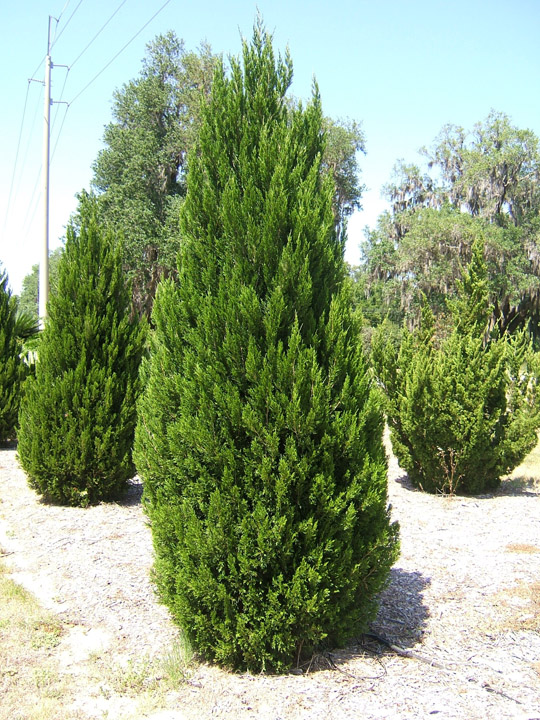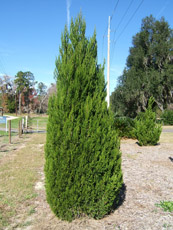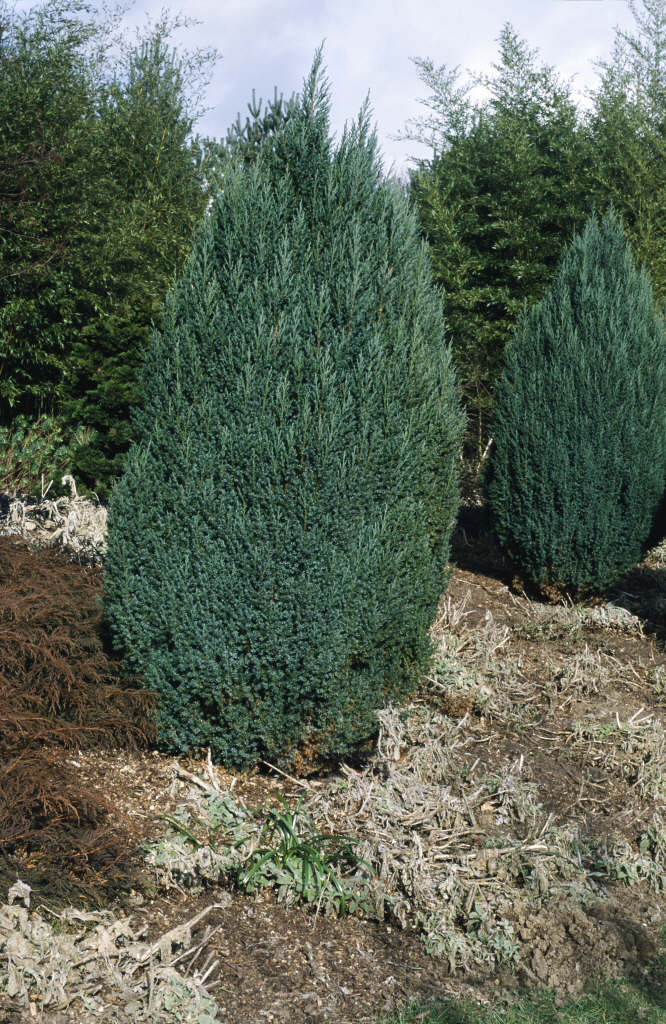Juniperus chinensis
Chinese juniper (Juniperus chinensis)
The Chinese juniper (Juniperus chinensis) is a perennial plant of the family of the cypress family ( Cupressaceae ). It is native to eastern Asia.
- 6.1 Literature
- 6.2 Notes and references
Description
Appearance and leaf
The four varieties of Chinese juniper grow as an evergreen prostrate and upright shrubs or trees that reach heights of growth up to 25 meters and diameter at breast height of up to 60 centimeters. The crown is conical, depending on the variety, or open, broad and irregular. The brown to cinnamon-colored stem bark peels off in sheets or strips. The branches are arranged depending on growth form straddling to upright. The terete or quadrangular twigs are red-green colored, hairless and straight or slightly curved, with a diameter of 1.0 to 1.2 millimeters.
There may be both flaky and needle-like leaves. The needle-like, almost lanceolate leaves are at a length of (rarely 3 to ) 6 to 12 millimeters and a width of 0.8 to 1.5 millimeters decussate or in whorls threefold. You have on the upper leaf surface two white stomatal bands; on the underside of leaves are light to dark green and slightly keeled. The scale-like, decussate leaves are dark green, diamond-shaped, closely pressed and dull. They are 1.5 to 3 mm long and 1 mm wide and have on the underside of leaves an elongated gland.
Generative features
The Chinese juniper is usually dioecious ( dioecious ) and rarely monoecious ( monoecious ) getrenntgeschlechtig. The male cones appear in February to April and are individually and terminally on the branches with scale-like leaves. They are ellipsoidal in shape and yellow in color, and have a length of four to six millimeters and a width of two to three millimeters in 14 to 18 Mikrosporophylle, each of which have three or four pollen sacs. The approximately spherical seed cones have short stems and are depending on the variety when mature colored brown to blue-black. They measure four to ten millimeters in diameter and usually contain three (rarely one, four, or five) brown seeds.
Chromosome number
The chromosome numbers be 2n = 22, 33, 44
Distribution and location
The Chinese juniper with its nominate Juniperus chinensis var chinensis in China and Japan is home. Varieties are further to be found in Russia's Sakhalin, Korea and Taiwan. He settled rocky sea shores and rocky areas at altitudes from 1400 to 2300 meters.
System
Juniperus chinensis was in 1767 by Linnaeus in Mantissa Plantarum. Generum Editionis vi et specierum Editionis II, page 127, first described. Synonyms for Juniperus chinensis L. are, among others Juniperus dimorpha Roxb. and Sabina chinensis (L.) Antoine.
Within this kind of four varieties are described:
- Juniperus chinensis var chinensis (syn.: .. .. . Juniperus barbadensis Thunb, Juniperus cabiancae Vis, Juniperus cernua Roxb, Juniperus flagelliformis hort ex Loudon, Juniperus fortunei hort ex Carrière, Juniperus sinensis JFGmelin, Juniperus sphaerica Lindl, Juniperus thunbergii. Hook & Arn, Juniperus virginica Thunb ): .. . The nominate is located as an upright shrub and a tree in China and Japan.
- Juniperus chinensis var sargentii Henry ( syn. Juniperus procumbens coffin, Juniperus sargentii (Henry) Takeda ex Nakai. ): It is located in northeastern China, the Russian Sakhalin, Korea and Japan.
- Juniperus chinensis var taiwanensis RPAdams & CFHsieh: It is endemic to Taiwan.
- Juniperus chinensis var tsukusiensis ( Masam. ) Masam. ( Syn. Juniperus tsukusiensis Masam. ): The home is located southeast of the Japanese main islands Japanese island of Yakushima.
Threats and conservation
Juniperus chinensis is listed by the IUCN Red List of endangered species and be listed as endangered. As for the here also called variety Juniperus chinensis var tsukusiensis new data surveys as deemed necessary.
Use
The Chinese juniper is a plant widely used horticulturally used and the most widely used as a garden plant Wacholderart next to the commons juniper. The varieties " Aurea ", " Blaauw ," " Kaizuka ", " Obelisk ", " Pyramidalis " and " Variegata " are mentioned in this context. Also in the Bonsai Gartenkunstart find the Chinese juniper use.
Swell
- Template: Internet resource / maintenance / access date not in ISO format Christopher J. Earle: Juniperus chinensis. In: The Gymnosperm Database. www.conifers.org 12 December, 2010, accessed on 22 January 2012 ( English).










